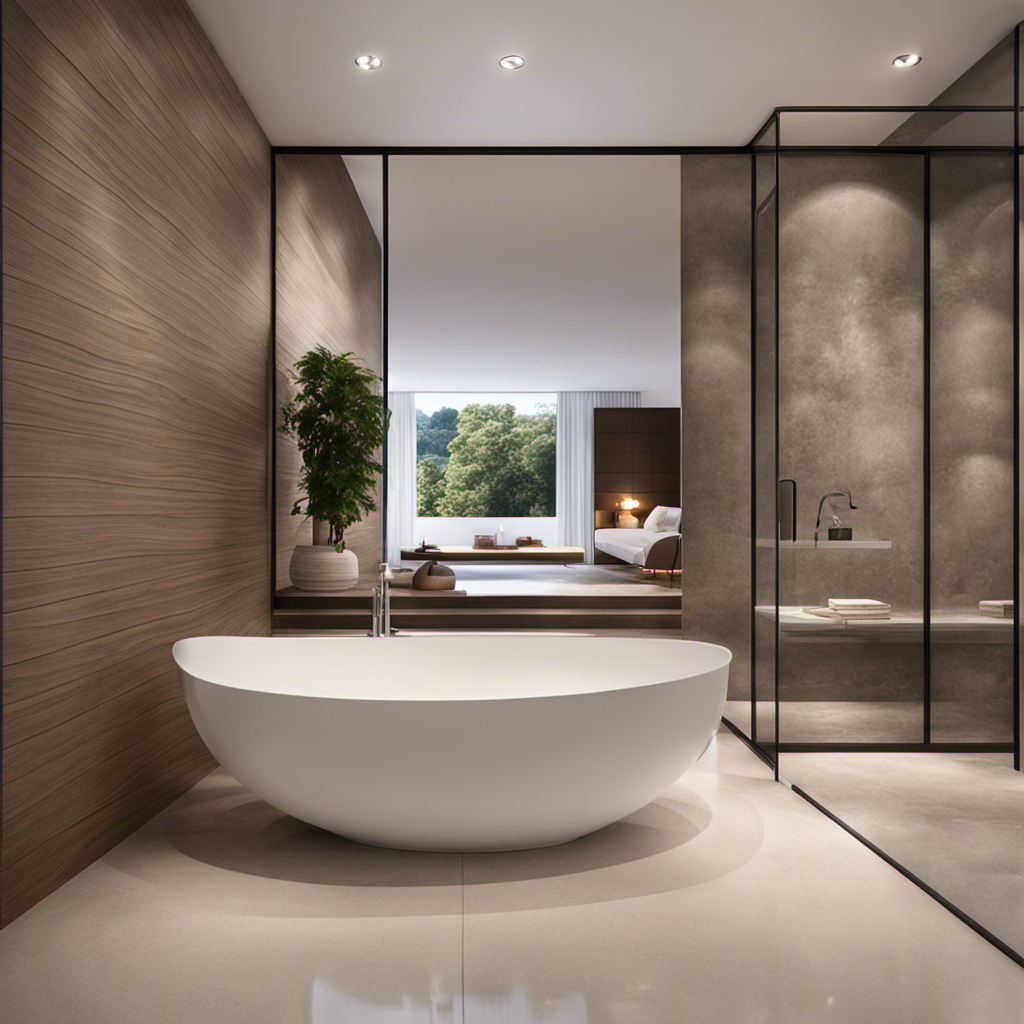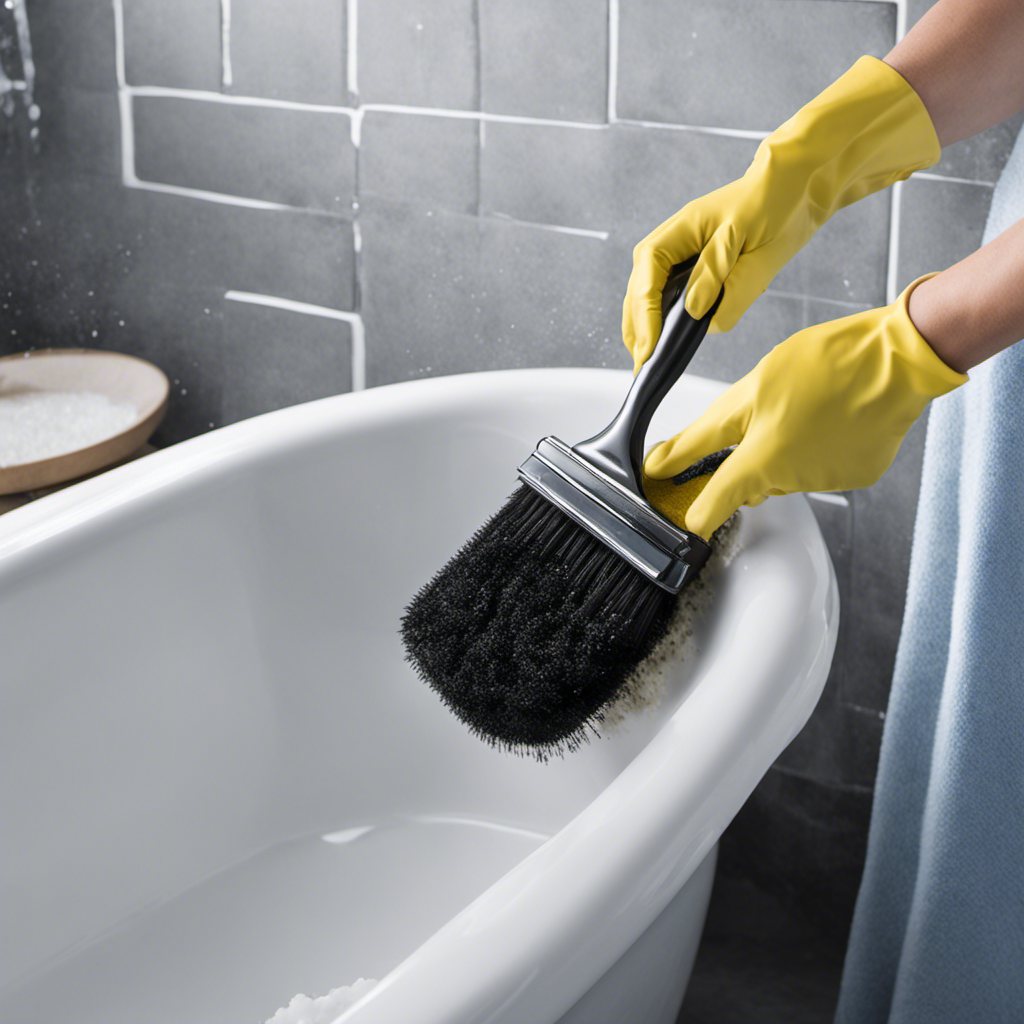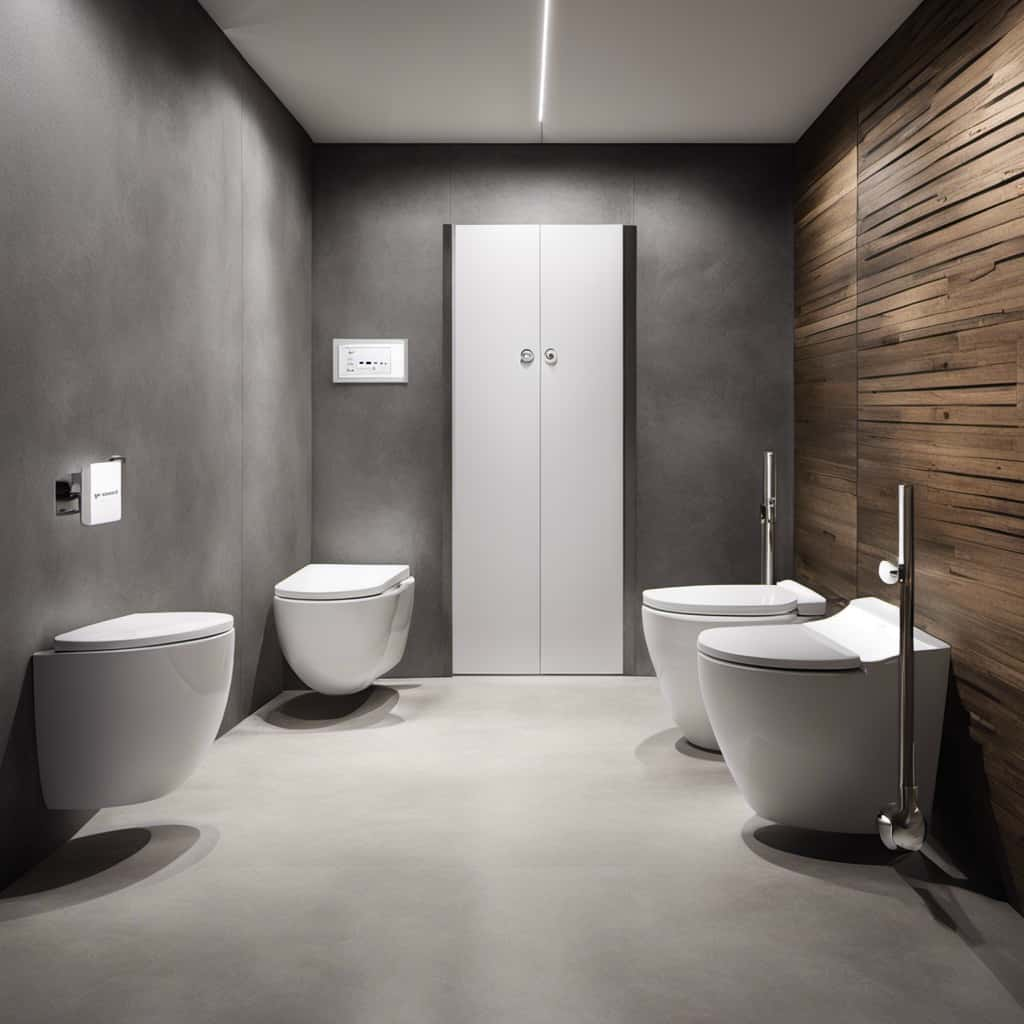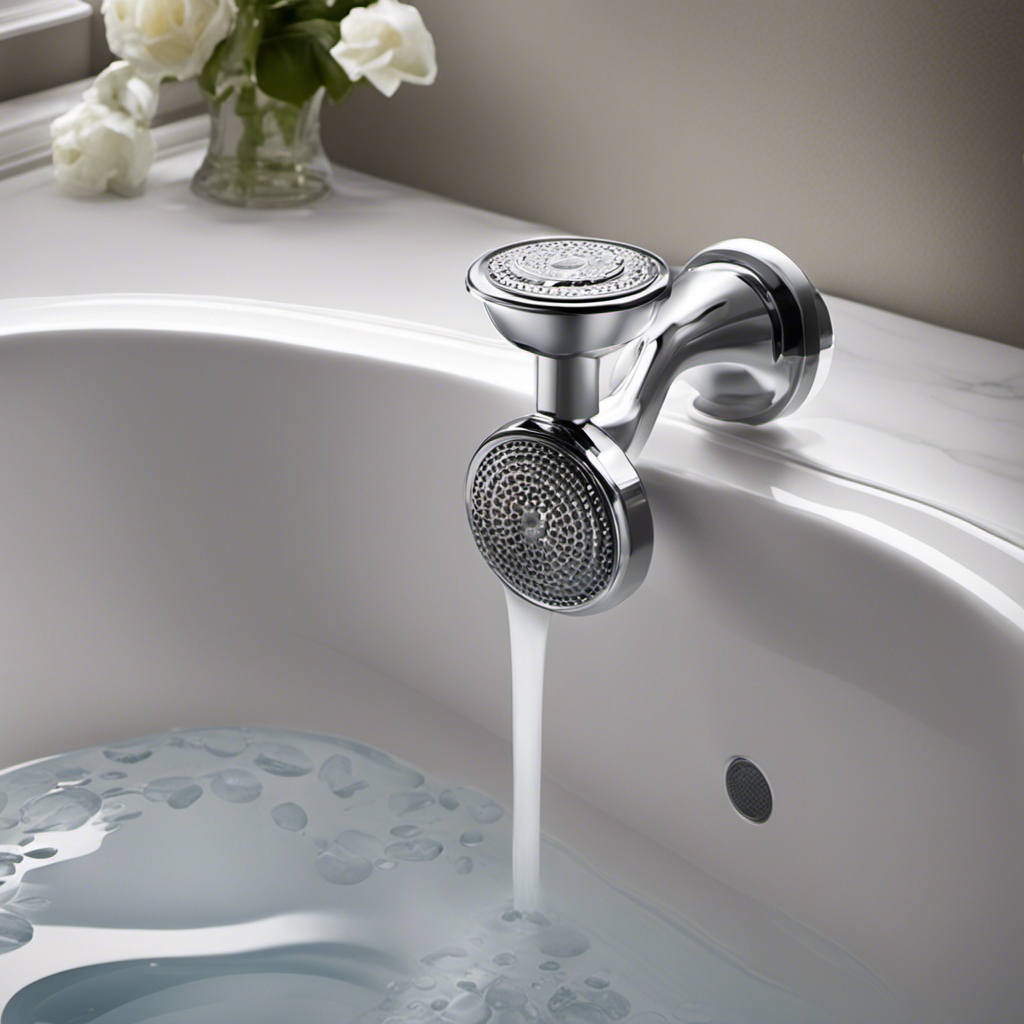Did you know that the average bathtub size can vary significantly? It’s true! In fact, there are many factors to consider when determining the dimensions of a normal bathtub.
From standard measurements to common sizes, understanding the different options available can help you make an informed decision for your bathroom.
In this article, I will explore the various dimensions and standardized sizes of bathtubs, providing you with the knowledge you need to find the perfect fit for your space.
Key Takeaways
- The length and depth of a bathtub can vary significantly, with standard measurements ranging from 60 to 72 inches in length and a depth of 14 to 20 inches.
- The choice of material for a bathtub is crucial, with options including acrylic, fiberglass, porcelain-enameled steel, and cast iron, each with its own advantages and disadvantages.
- Average bathtub sizes are typically designed to fit the average person comfortably, and factors such as material used and installation costs should be considered.
- Bathtub volume is measured in gallons, with standard bathtubs holding 40 to 60 gallons of water, although larger models can hold up to 80 gallons. Factors such as personal preferences, available space, and budget influence the choice of volume and materials.
Standard Bathtub Dimensions
The standard bathtub dimensions vary, but they typically range from 60 to 72 inches in length. When it comes to bathtub depth, it usually ranges from 14 to 20 inches. The depth is important as it determines how much water the bathtub can hold.
When choosing a bathtub, it’s also essential to consider the material options available. Common materials include acrylic, fiberglass, porcelain-enameled steel, and cast iron. Acrylic is a popular choice as it is lightweight, durable, and easy to clean. Fiberglass is another option that offers affordability and resistance to cracking. Porcelain-enameled steel bathtubs are known for their durability and resistance to stains. Lastly, cast iron tubs are heavy and provide excellent heat retention, but they require more maintenance.
Considering these factors will help you choose the right bathtub for your needs.
Average Bathtub Sizes
On average, most tubs are sized to fit the average person comfortably. When it comes to choosing a bathtub, there are various factors to consider, including the materials used and the installation costs.
Bathtubs can be made from a range of materials such as acrylic, fiberglass, cast iron, or porcelain. Each material has its own advantages and disadvantages, so it’s important to choose one that suits your preferences and budget.
The installation costs for a bathtub can vary depending on factors such as the complexity of the installation, the type of bathtub chosen, and any additional plumbing work required. It’s always a good idea to consult with a professional to get an accurate estimate.
Now let’s move on to the next section and explore the typical measurements of a bathtub.
Typical Bathtub Measurements
When it comes to choosing a tub, it’s important to consider the typical measurements. Bathtub volume and materials play a crucial role in determining the size and functionality of a bathtub.
The volume of a bathtub refers to the amount of water it can hold, which is measured in gallons. Standard bathtubs typically have a volume ranging from 40 to 60 gallons, although larger models can hold up to 80 gallons.
In terms of materials, bathtubs are commonly made from acrylic, fiberglass, cast iron, or porcelain-enameled steel. Each material has its own pros and cons in terms of durability, maintenance, and heat retention.
Ultimately, the choice of bathtub volume and materials depends on personal preferences, available space, and budget.
Common Bathtub Dimensions
Consider the dimensions of a common bathtub such as length, width, and depth to ensure it fits your space and meets your needs. When it comes to choosing a bathtub, there are several factors to consider. Here are some tips to help you make the right decision:
- Size: Measure your bathroom space to determine the maximum dimensions your bathtub can be.
- Materials: Bathtubs can be made from various materials such as acrylic, fiberglass, cast iron, or porcelain. Each material has its own advantages and disadvantages in terms of durability, maintenance, and cost.
- Installation: Think about the installation process and whether you’ll need professional help. Some bathtubs are easier to install than others, so consider your DIY skills and budget.
- Accessories: Consider the additional features and accessories you may want, such as handrails, jets, or built-in shelving.
Standardized Bathtub Sizes
Take note of the standardized sizes of bathtubs to ensure that it will fit perfectly in your bathroom space.
When choosing a bathtub, it’s important to consider not only the size, but also the materials and durability. There are various materials available, such as acrylic, fiberglass, cast iron, and porcelain.
Each material has its own advantages and disadvantages, so it’s important to choose one that suits your needs and preferences.
Additionally, there are different types of bathtub designs and styles to choose from, including freestanding, alcove, drop-in, and corner bathtubs. Each design offers its own unique features and benefits.
It’s essential to consider both the size and style of the bathtub to ensure a comfortable and functional bathing experience.
Conclusion
After researching the various dimensions of standard bathtubs, it is clear that there is no one-size-fits-all answer to the question of how big a normal bathtub is.
However, one interesting statistic to note is that the average length of a standard bathtub is around 60 inches, while the average width is approximately 30 inches.
This information is particularly useful for individuals who are remodeling their bathrooms or looking to purchase a new bathtub, as it provides a practical starting point for selecting the right size.










